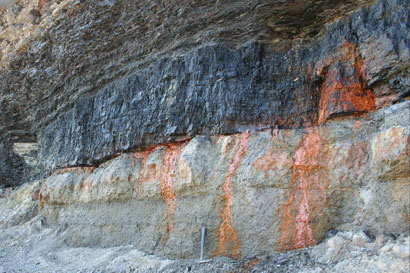Coal beds and Noah’s Flood part 2

Dr Steven Austin1 has proposed an explanation for the formation of multiple coal beds separated by other sedimentary rocks. He originally presented this in his Ph.D. thesis at the prestigious Penn State University in 1979. Dr Austin’s explanation shows that such seams can be formed from huge mats of buoyant vegetable debris floating on the waters during the violent watery catastrophe of Noah’s Flood. The vegetation, including whole forests, had been ripped up by raging flood waters. We see this on a small scale even today in local floods, which are capable of producing floating islands of vegetation and/or vegetable debris (e.g. in the Amazon River basin of South America).
As the bark, leaves, twigs and logs in such mats became waterlogged, they sank to the sea floor beneath to be buried and ultimately to form coal beds. Other sediments were then washed in by the waters beneath the floating mats to cover these beds of vegetation. Further vegetable material in the mats continued to become waterlogged and to sink, and a depositional cycle of events was established. This explanation can easily account for multiple coal beds stacked between other sediments, both fossiliferous and non-fossiliferous.
Dr Austin has now expanded his original research. He has found by extensive additional research on coal seams across the USA that his floating vegetable debris model is consistent with the evidence throughout the United States, even in the Illinois Basin with its 80 stacked coal beds. Similar research is under way in Australia, and already we know that Dr Austin’s model can be applied—with the addition of volcanism as a factor both in destruction of forests and deposition of vegetable debris, logs and ash layers—to the important Newcastle coalfield on the central coast of New South Wales.
We confidently expect that this floating vegetable debris model will virtually have universal application, along with variations such as the role of volcanism, as research continues on coal beds in sedimentary basins worldwide.
The evolutionists’ objection based on the occurrence of multiple stacked coal beds in sedimentary basins worldwide is thus invalid. One Noah’s Flood can account for all the sediment layers in these basins.
References and notes
- At the time this article was published Dr Austin was research geologist at the Institute for Creation Research, San Diego (USA). Return to text.





Readers’ comments
Comments are automatically closed 14 days after publication.